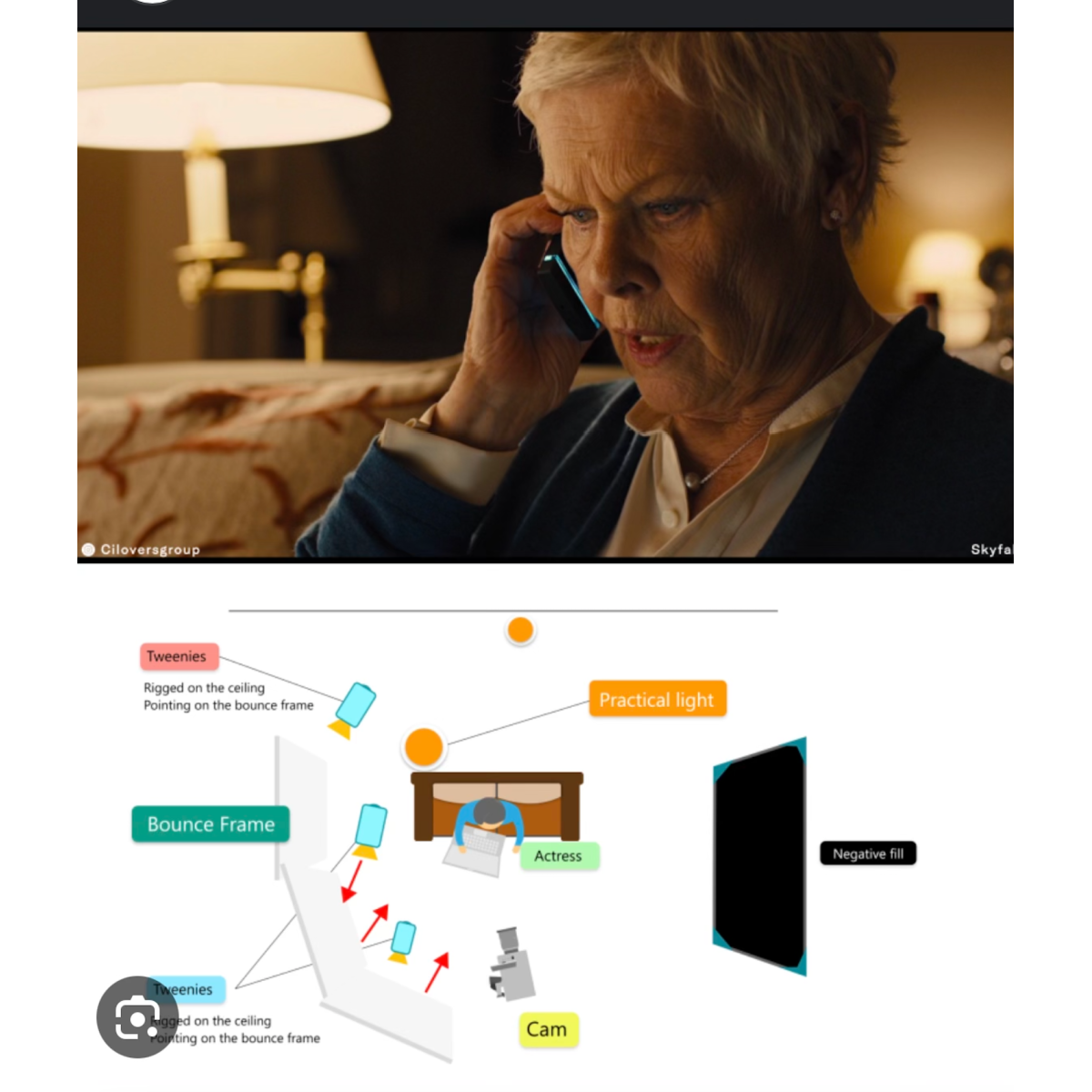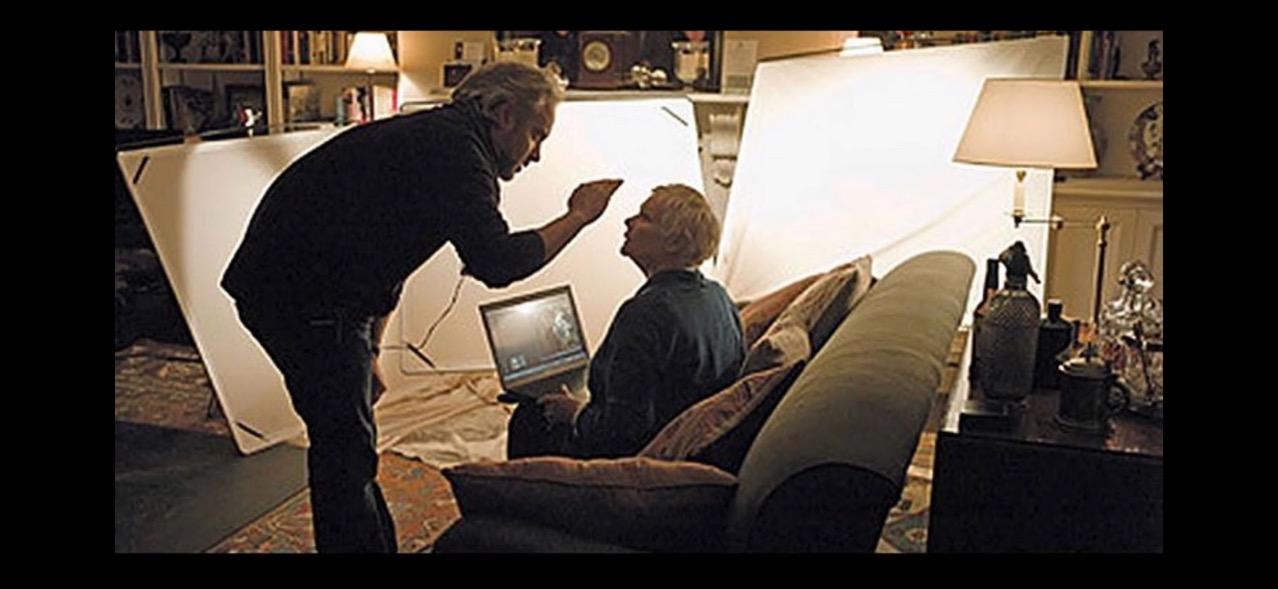Forum Replies Created
-
AuthorReplies
-
David, Im really interested in what your interview set will be like: Direct fill light? Bounce? Book light? Do you give a hair light? Bounce or direct? Thank you!
PS:
Have you ever compared with the work of “Muslin unbleached” and “Magic Closed” fabric in the “Cove Light” setting? Do you think one material is better? Softer?
Thank you!Many thanks for the detailed explanations of all the possibilities. I tried the “power windowing” in DaVinci with a friend who likes to work with DaVinci and achieved beautiful natural effects that give the actor more presence. The area around the eye (dark circles etc.) can also be naturally lightened. A cool tool if you want to give the eye area more presence. As always, the strength of the effect is a matter of taste…
Many thanks to you!Have any of you already compared “Muslin unbleached” and “Magic Closed” in the setting of “Cove Light”? Softness? Etc.?
Thank you!Dear Roger Deakins,
I read somewhere that you don’t use ‘traditional’ 3-point lighting for interview scenes either.
How would you create an interview scene (interviewer and interviewee)? Instead of a traditional softbox? Bounce on unbleached muslin? Or even a curve lighting? Or just a muslin bounce on the side as a key light?
What would you use as a backlight? Practical lights? So that the subject stands out slightly from the background.Or alternatively with 2 ring lights (each on the side of the persons, Rembrandt style)?
Thank you!OK, thanx.
Thank you so much for your feedback.
Have a nice evening…Thank you!
Do you have a special preference for soft lighting for the actors? HDR doesn’t make it any easier. Do you have any favorite foils or camera filters that you prefer to work with?Thank you so much for having answered me in such detail. It’s great that you let one share your expertise!
In one post you write that you like “cooler” shadows (not this way reddish). Fill light and keylight should be warmer though….
How big are the temperature differences between the two lighting types?Also, like Roger, do you use a lot of bounce to achieve soft lighting (Muslin, etc.)?
Or do you light, for example, through foils (e.g. Half Soft Frost, etc.) to give the actors softer lighting?May I ask you if you work with color charts on set (Color Checker, etc.)?
Thank you very much for the detailed and factual explanation. Many lighting tutorials usually present one technique as the only true one because they are convinced of only one method. But you are right. There is no right or wrong.
Thank you so much for your time!That sounds logical, of course, sorry!
But you write in an earlier post that you tolerate color differences in the image, like Roger.
But how do you deal with color casts (skin tone bluish, orange, etc.)?
Surely you will be trying to prevent that in some way…
Simply by using a white balance?
Or is it more consistent (window example) to work with ½ CTO right away?
Thank you!There is always talk about CTO/CTB window gels.
What about 1/2 CTO/CTB CAMERA filters? Or do they have too many disadvantages?Roger is the expert and writes about it:


The angle of the light to the light to the bounce can alter the size and the shape of the source you create. Whether a lamp is above and rigged to the ceiling or on the floor on a low boy or ‘turtle’ is usually just about space and convenience.
You can double the muslin but it doesn’t make so much difference. The light going through it could be a problem though, and bounce around to interfere with the contrast of the shot.
If I have a series of lamps bouncing off a wide reflector I may, repeat may, dim the lamps to the sides and also warm them up to create a softer fall off and a warmth reaching into the shadow area. I might do that but it is no means necessary.
The distance the bounce source is from the subject controls the ‘softness’ of the light but also the fall off. If you want the wall behind your subject to seem as brightly lit as they are then you have the bounce at some distance away but if you want to isolate a face you then move it close.
The curve I might put into an array of small bounce boards or muslins is to ‘funnel the light when I need to. It doesn’t affect the subject as much as it does the background.
The height of the bounce is a choice made when looking at the natural source you are adding to or emulating. You might also change the height depending on how the light falls on your subject, whether that is an object or a face.
Ah, OK. Thank you for the images. Really nice 😉
So for the ‘boy with the guitar’ at the top of the image, no gel was used and the front field was lit with tungsten lighting(?).
The store-bought LED bulbs can have a bit of green in them though.
Which bulbs/brands are “neutral” for you?
And how many watts do you normally use?
Some DPs will use 1/2 CTO to correct daylight windows to have less of a difference with tungsten practicals inside. There were also blue-dipped tungsten photoflood bulbs that were in the mid-4000s in Kelvin — today you could use an RGB LED bulb for some control or a daylight LED bulb if you didn’t want any warmth. Keep in mind that the blue of uncorrected daylight is often less saturated than when uncorrected HMIs are used for dim moonlight because daylight is brighter in exposure, which washes out some of the blue color. A bright uncorrected daytime window on 3200K film looks less blue than if you put ND1.2 gel on it, for example, and made it a darker window.
Thank you for your comment!
There are also (for example, from Aputure etc.) bulbs where you can completely control the color temperature.
Many also say that RGB LED lamps are easier, what concerns the light tuning on the set. How do you work? RGB? 1/2 CTO? -
AuthorReplies
